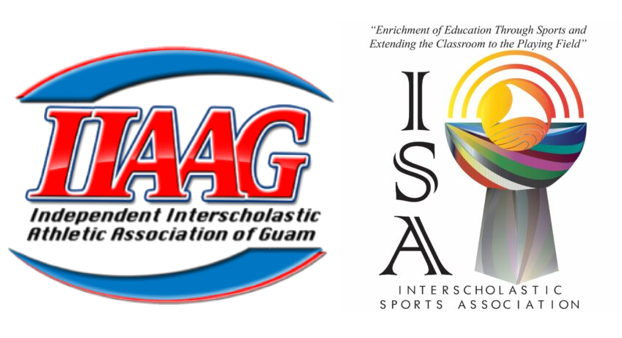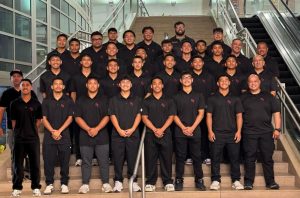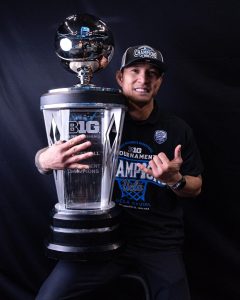
By Eddie Pelkey
In 2019, a pivotal moment occurred for Guam’s high school athletics when the Guam Department of Education (GDOE) Board voted unanimously to part ways with the Independent Interscholastic Athletic Association of Guam (IIAAG), paving the way for the establishment of the Interscholastic Sports Association (ISA).
This monumental decision had profound implications for thousands of student-athletes across the island. After nearly three decades immersed in high school basketball, I gained insider perspective on the discussions between the ISA and IIAAG, leading me to believe that the crux of this separation was ultimately about power – better described by my colleagues at GDOE as governance. GDOE felt disenfranchised, asserting they weren’t given the voice and authority they deserved within the IIAAG framework. Conversely, IIAAG contended that GDOE’s motivations stemmed from deeper, more complex issues beyond mere power dynamics.
Before the start of the 2019/20 school year, I took the initiative to meet with the GDOE Superintendent Jon Fernandez and ISA Coordinator Avelino “Al” Garrido to brainstorm strategies for maintaining unity within high school basketball. Leading up to this discussion, I reached out to my friend E.J. Calvo, the newly elected President of the Guam Basketball Confederation (GBC), an organization recognized by both the Guam National Olympic Committee and FIBA. Together, we explored options to unify the schools and concluded that GBC could orchestrate a playoff tournament, inviting top teams from each school to compete for the title of High School National Champion. This was contingent upon persuading ISA to allow interleague play with IIAAG – an ambitious yet exciting prospect.
Armed with this innovative idea, I presented it to Jon and Al: let’s model our high school basketball structure after the NCAA. Each organization would maintain its own league (ISA and IIAAG) creating a framework similar to NCAA conferences. There would be conference games alongside non-conference games, allowing each side to play a total of ten games throughout the season. I proposed scheduling a third day each week for non-conference (or interleague) play, where ISA and IIAAG member schools could compete against each other. This structure would guarantee additional home and away games for each school and ensure that refereeing issues were addressed by aligning the officiating with the home team’s league.
However, the reality of the situation soon became apparent. Despite our efforts, the inaugural joint ISA/IIAAG playoffs ultimately saw IIAAG sweep the semifinals and finals, marking a bittersweet victory for the state of high school basketball on Guam. The challenges continued in the 2020/21 season when COVID-19 threatened to completely derail our efforts; yet, St. Paul and Father Duenas persevered and participated in the ISA league, while other IIAAG schools opted out. By the 2021/22 season, a final joint league was organized, only for the two bodies to once again part ways in subsequent years.
Fast forward to the 2024/25 season, and we stand at a crossroads once again, facing the specter of a divided boys’ basketball season. Before the girls’ basketball season kicked off in October, GBC proactively extended an invitation to both leagues to unify under its administration. GBC offered to manage everything – scheduling, officiating, playoffs, trophies, and all-star selections. The girls’ season, under GBC’s leadership, has been a resounding success, garnering widespread praise and enthusiasm for the sport. Yet, as for the boys’ basketball season, uncertainty looms – this time, not over governance issues, which GBC effectively resolved by offering to oversee the league’s operations, but rather due to stringent procurement laws. GDOE insists it must solicit at least three quotes for officiating services, despite GBC’s readiness and capability to manage the league’s officiating using an already-trained and certified group of officials under its umbrella, recognized by both GNOC and FIBA.
This insistence on cheap bids under the Request for Quotations (RFQ) makes little sense. GBC has proven itself more than capable of running a professional, high-caliber league, including organizing national programs, international games, and player development initiatives. What is needed now is a collaborative spirit—an acknowledgment that the future of basketball in Guam hinges on our ability to unite for the benefit of our student-athletes, ensuring they have the opportunities, recognition, and competitive environment they deserve. One league should not have to give in to the other league’s demands.
Let’s not allow antiquated bureaucratic processes dictate the fate of our beloved sport; instead, let’s champion a future of collaboration, mutual respect, and shared passion for the game. In the end, our student athletes will be appreciative of those efforts!
(Editor’s note: Eddie Pelkey is the former head coach of Father Duenas basketball, former national coach for Guam Basketball, and has served on the GBC board. In his day job, he is a warranted Contracting Officer for the Pacific Air Forces.)


GPS Sports Calendar
April 2025
- SU
- MO
- TU
- WE
- TH
- FR
- SA
Events for April
4th
GIRLS HS FOOTBALL LEAGUE
HS BOYS VOLLEYBALL
Events for April
5th
H.S. PADDLING
H.S. TRACK & FIELD
GIRLS 3×3 BASKETBALL FINALS
Events for April
5th
Events for April
11th
GIRLS HS FOOTBALL LEAGUE
HS BOYS VOLLEYBALL
Events for April
12th
KO’KO’ KIDS FUN RUN
H.S. PADDLING
H.S. TRACK & FIELD
Events for April
16th
Events for April
18th
Events for April
19th
Events for April
23rd
GIRLS HS FOOTBALL LEAGUE
HS BOYS VOLLEYBALL
Events for April
24th
H.S. PADDLING
HS BOYS VOLLEYBALL
Events for April
25th
GIRLS HS FOOTBALL LEAGUE
HS BOYS VOLLEYBALL
SCRAPS 5
Events for April
26th
Events for April
30th
GIRLS HS FOOTBALL LEAGUE
HS BOYS VOLLEYBALL

Basketball
TAMUNING GYM REOPENS AFTER RENOVATIONS

Running/Track
JAPAN RUNNERS CROSS KO’KO’ FINISH LINE FIRST

Basketball
STINGRAYS TAKE ON TAGAYTAY GIRLS HOOPS

Running/Track
TRACK & FIELD ROLLS ON BEFORE SPRING BREAK

Football
GUAM MOURNS FOOTBALL LEGEND BORDEN

Running/Track
TRACK & FIELD ROLLS ON BEFORE SPRING BREAK

Volleyball
ROYALS RIDING HIGH, MOVE TO 6-0

Basketball
STINGRAYS TAKE ON TAGAYTAY GIRLS HOOPS
COMING SOON …
4th Quarter Sports: boys volleyball, girls soccer, paddling, track & field
Scrap 5 on April 25


















